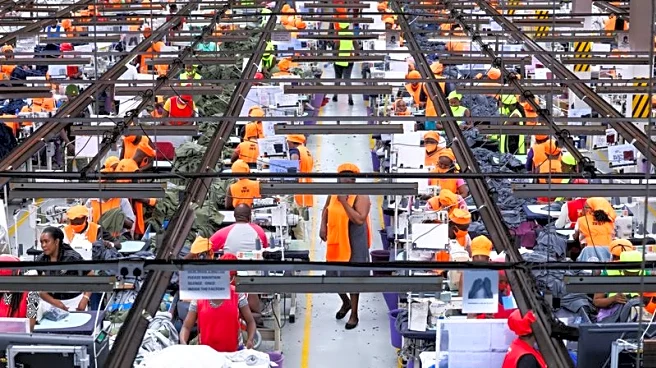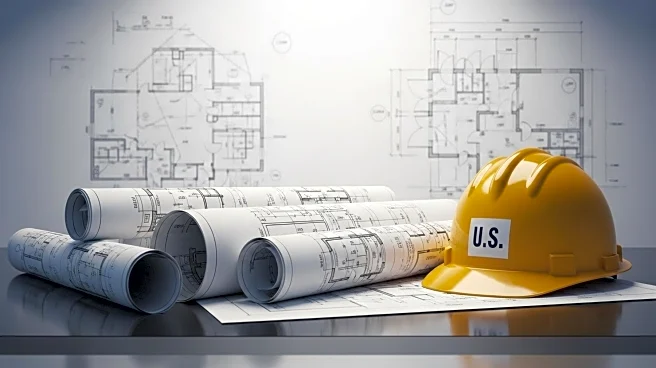What's Happening?
In August 2025, several large-scale commercial construction projects broke ground across the United States, despite signs of economic softness. According to Dodge Construction Network, total construction starts increased by 1.7% to a seasonally adjusted annual rate of $1.23 trillion, following a 10% drop in July. Notable projects include the $5.1 billion Woodside Louisiana LNG facility and the $2.9 billion Cheniere Corpus Christi LNG facility. However, nonresidential building starts, including commercial and institutional projects, fell by 5.4% in August, with significant declines in warehouse and retail starts. Manufacturing construction also continued its downward trend, dropping 24.4% in August.
Why It's Important?
The commencement of these major construction projects highlights the ongoing demand for infrastructure development, even amid economic uncertainty. The construction sector plays a crucial role in supporting economic growth and job creation, and the rebound in construction starts may signal resilience in the industry. However, the decline in nonresidential building starts and manufacturing construction raises concerns about the sustainability of this growth. The mixed picture presented by construction activity reflects broader economic challenges, including potential impacts on investment and employment in related sectors.
What's Next?
As construction activity continues to fluctuate, stakeholders in the industry may need to adapt to changing economic conditions. Contractors and developers may focus on utility-related work, which saw a 39.7% increase in August, as a potential area for growth. Additionally, the construction sector may benefit from policy measures aimed at stimulating infrastructure investment and addressing economic softness. Monitoring trends in construction starts and economic indicators will be crucial for industry players to navigate the uncertain landscape.
Beyond the Headlines
The construction industry's response to economic challenges may have long-term implications for urban development and infrastructure planning. The focus on large-scale projects, such as LNG facilities and energy complexes, reflects a shift towards sustainable and energy-efficient construction practices. This trend may influence future policy decisions and investment strategies, as stakeholders prioritize projects that align with environmental and economic goals.












